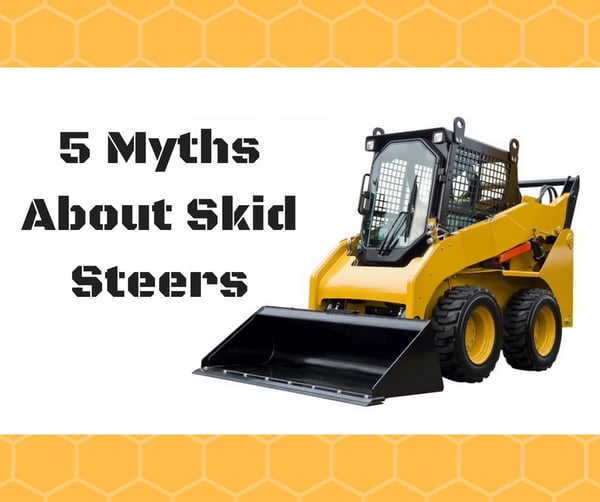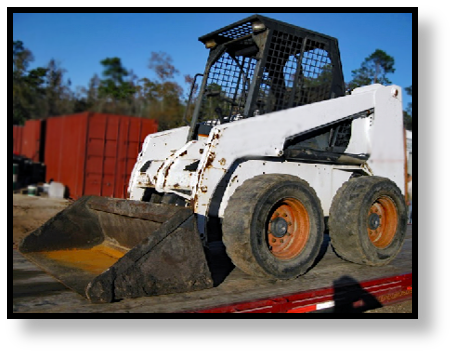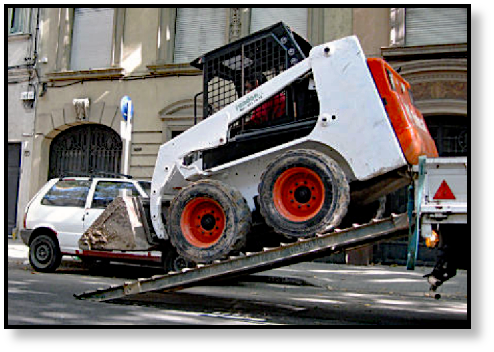Skid steer loaders are awesome machines -- they’re maneuverable, their compact, and they can perform all kinds of tasks. However, they’ve been around long enough to be the victim of myths and misinformation. In this Shop Talk Blog post, we are going to dispel five myths about the skid steer loader.

Myth #1: The skid steer market is dying.
As Mark Twain once said, “The reports of my death are greatly exaggerated.” The fact is that the skid steer market is nowhere near dying. These rugged, small machines are as popular as ever based on this article from Equipment World. Even though CTL and MTL sales continue to increase, the skid steer loader continues to hold its own niche in the compact machine market because it can still perform tasks that no other machine can. That leads us to our next myth!
Myth #2: Skid steers and compact track loaders are basically the same thing.
It’s true that the body and most of the frame of the first compact track loader came from a skid steer, but these machines are still quite different. The obvious difference is the use of tracks instead of wheels. The wheels on a skid steer allow it to move more quickly, make zero-radius turns, and perform well on hard surfaces like concrete or asphalt. The tracks on a CTL, on the other hand, make it possible to gain more traction, move through rougher terrains or over more sensitive surfaces, and provide more stability.

Oh, and SSLs are also about 30% cheaper than an equivalent CTL. In short, they are quite far from being the same thing! And it would take more than adding tracks to a modern SSL to convert it to a true CTL.
Myth #3: OSHA doesn’t require equipment training if you are going to operate a skid steer.
This is another myth and a dangerous one at that. Lift and Access has a blog post debunking safety myths, and in that post they make the point that OSHA does require that employees be aware of the hazards they might face at work. That means equipment training is important and legally required. They reference these two different OSHA standards:
OSHA Construction Standard 1926.21(b)(2)
“The employer shall instruct each employee in the recognition and avoidance of unsafe conditions and the regulations applicable to his work environment to control or eliminate any hazards or other exposure to illness or injury.”
OSHA Industry Standard 1910.9(b)
“Training. Standards in this part requiring training on hazards and related matters, such as standards requiring that employees receive training or that the employer train employees, provide training to employees, or institute or implement a training program, impose a separate compliance duty with respect to each employee covered by the requirement. The employer must train each affected employee in the manner required by the standard, and each failure to train an employee may be considered a separate violation.”
Myth #4: The "yellow bucket" hydraulic fluid is just fine for my skid steer loader.
By "yellow bucket" we men that generic type of tractor hydraulic fluid that is readily available at a very desirable price. Even though there are various types of equipment listed as compatible with this fluid, it won’t provide the characteristics needed for modern skid steer loaders.

It’s cheaper because it’s manufacturing process is much more inexpensive than what’s used to make better hydraulic fluids. It might work on your father’s old tractor, but not on your brand new skid steer loader. Depending on the type of skid steer you have, using yellow bucket hydraulic fluid might seriously damage or shorten its useful lifespan.
Conclusion
Remember that not everything you read or hear about skid steers is going to be true. If you know of any other myths, let us know in the comments! We’d love to hear from you.
Texas Final Drive is your partner in providing new or remanufactured final drive hydraulic motors from a single mini-excavator to a fleet of heavy equipment. Call today so we can find the right final drive or hydraulic component for you, or check out our online store to find your O.E.M. manufacturer brand motor now.


